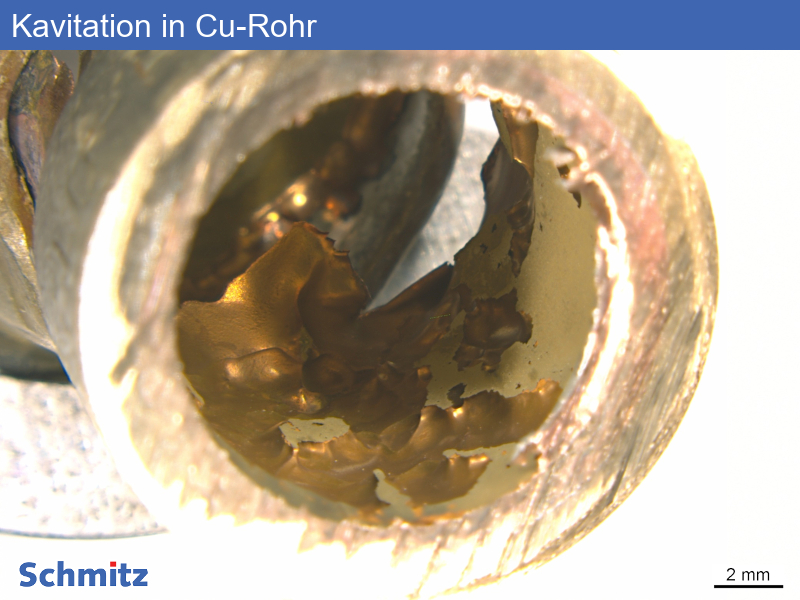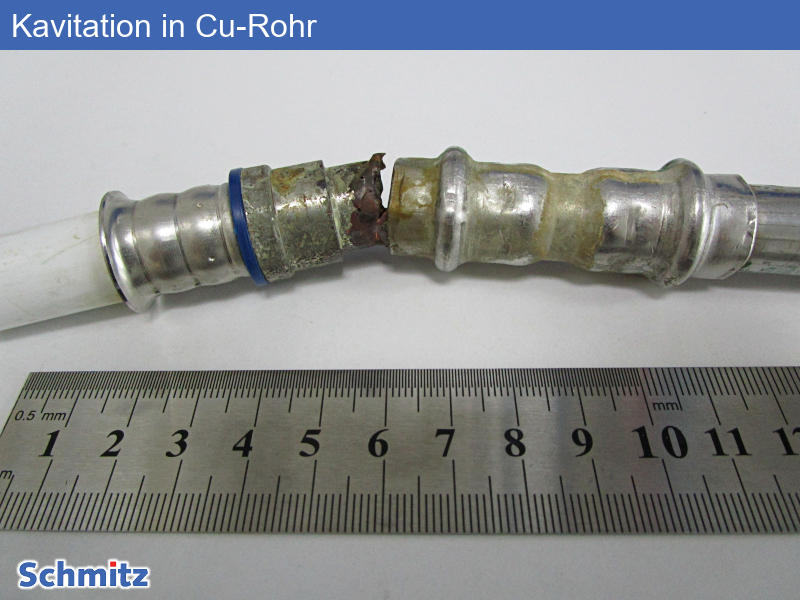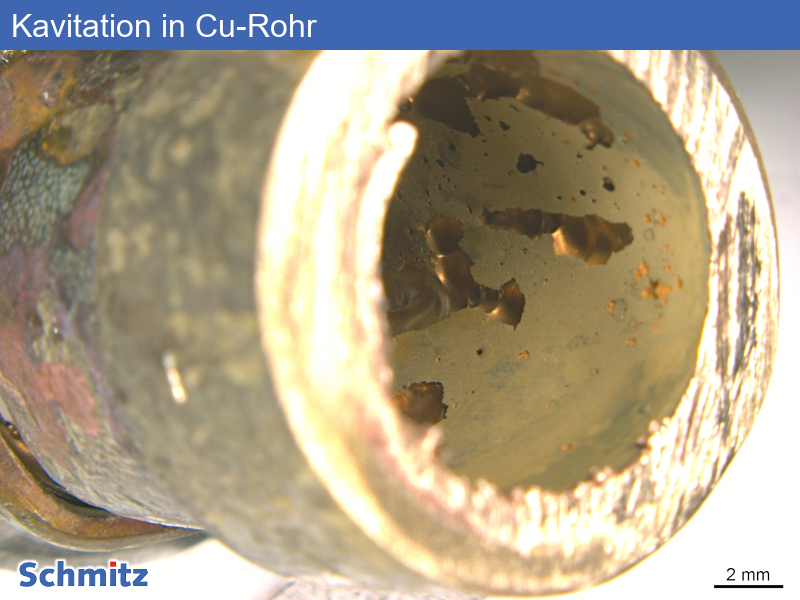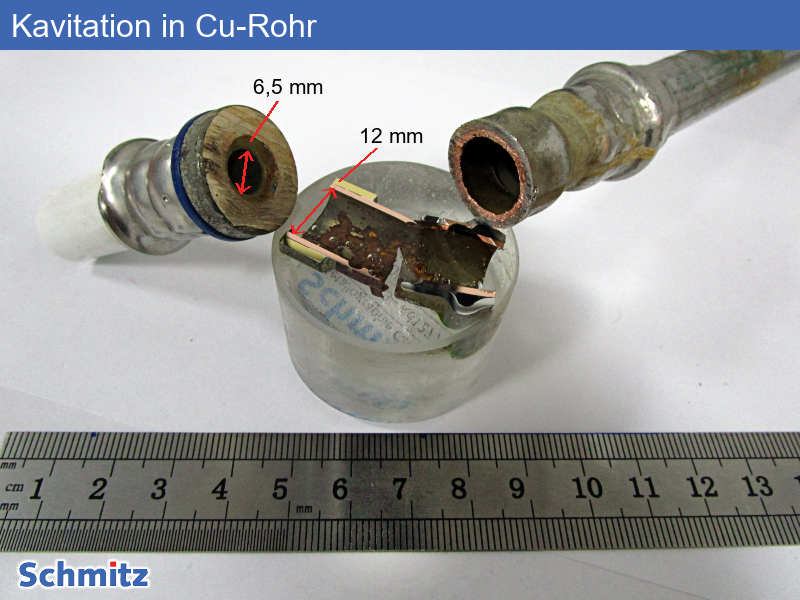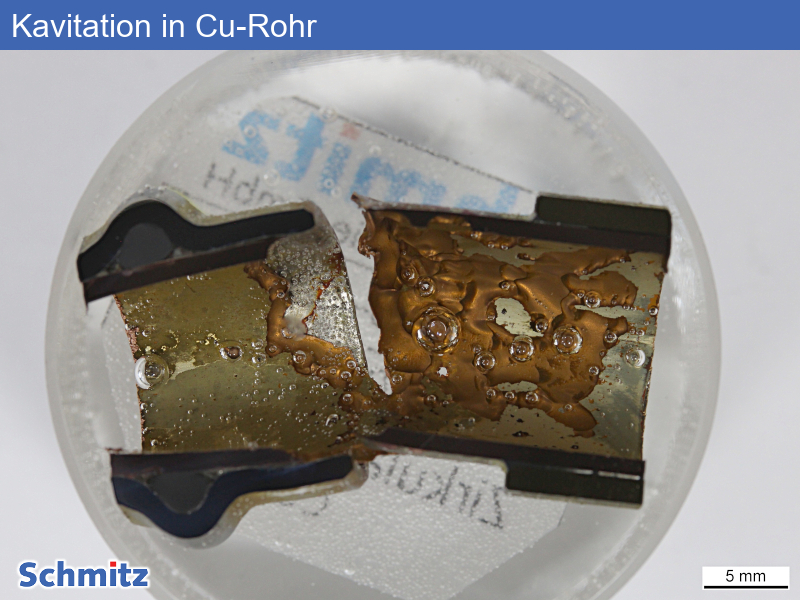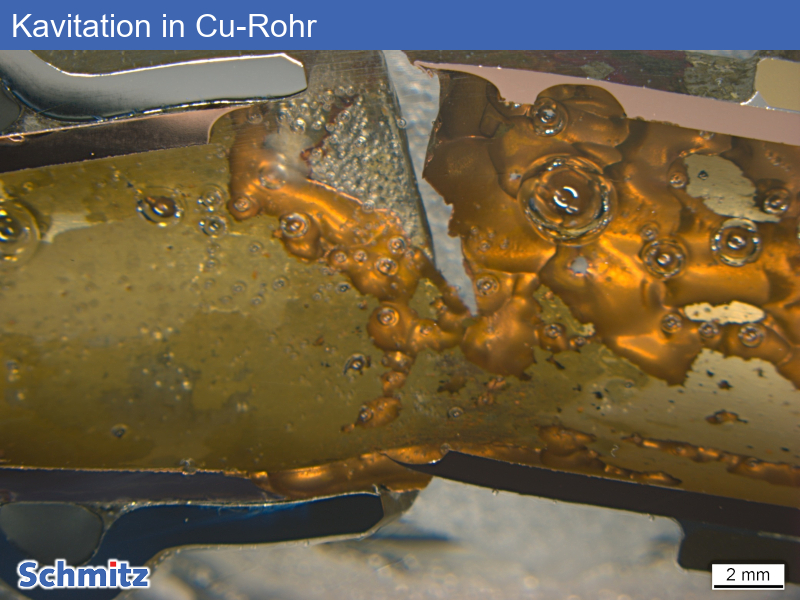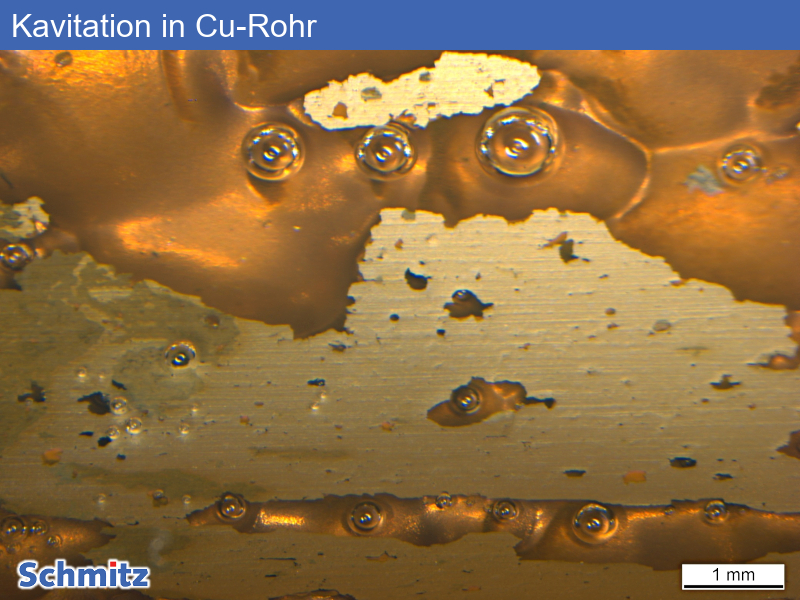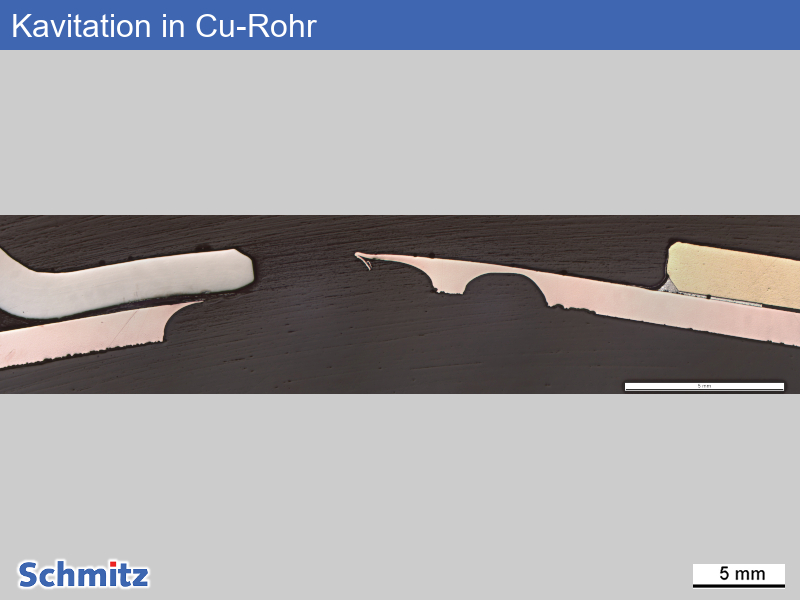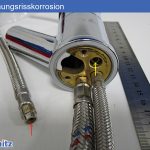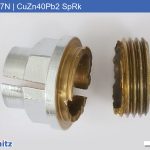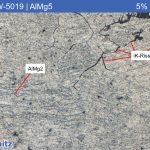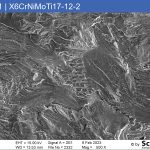Cavitation corrosion in a heating pipe
| State | Cavitation corrosion in a heating pipe |
|---|---|
| Etching | ungeätzt |
In a circulation pipe, a straight piece of copper pipe was thinned massively in the middle of a joint made of different materials and locally eroded to the point of leakage.
The cause of the damage was a sudden widening of the pipe cross-section a few mm to the left of the damaged area, where the internal diameter increases from approx. 6.5 mm in the brass part to approx. 12 mm in the copper pipe. The typical consequences are turbulence, negative pressure and cavitation: the implosion of gas bubbles directly on the metal surface. As a result, the protective top layer is blasted away first (as can be seen in the initial stage in Fig. 3 and Fig. 7) and then more and more metal is removed. The large corrosion cavities are bare metal and bordered by sharp edges.

